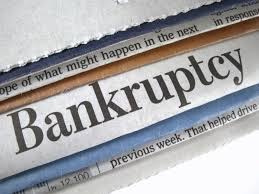 When a debtor files Chapter 7 bankruptcy most of their debts are discharged at the end of the case. Discharging a debt means that the debtor is no longer personally liable for the debt. They don’t have to pay the pay day loans, credit cards, medical bills, and charge accounts listed in the case. However, secured claims are sometimes treated differently in Chapter 7 bankruptcy. The debt itself is discharged but the creditor still retains a lien in the collateral.
When a debtor files Chapter 7 bankruptcy most of their debts are discharged at the end of the case. Discharging a debt means that the debtor is no longer personally liable for the debt. They don’t have to pay the pay day loans, credit cards, medical bills, and charge accounts listed in the case. However, secured claims are sometimes treated differently in Chapter 7 bankruptcy. The debt itself is discharged but the creditor still retains a lien in the collateral.
In regards to secured claims, the debtor has three options as to how to treat the debt. First, they can surrender the asset and discharge the debt. Second, they can reaffirm the debt and keep the collateral. Reaffirmation causes the reaffirmed debt to survive the bankruptcy discharge. The debtor will continue to be liable after the case is completed. Third, the debtor can redeem the collateral by paying the creditor an amount equal to the value of the property as of the date of the filing of the bankruptcy case.
Redemption may be the preferred method of obtaining collateral at the lowest possible price, but there are obvious problems with redeeming property. First, most debtors don’t have enough exempted cash to pay the creditor the value of the property. The debtor cannot use nonexempt funds to pay the creditor. Nonexempt property belongs to the bankruptcy estate. The debtor may be able to finance the redemption of the property, however the interest rate will most likely be high.
If the bankruptcy case was converted from Chapter 13 to Chapter 7 then the debtor can use the funds paid to the creditor in the Chapter 13 plan to redeem the property. If there is a remaining amount owed to the creditor in order to pay an amount equal to the value then the debtor must pay the remaining amount owed in a lump sum.
For more information about redeeming property in a Texas bankruptcy case, contact a Garland TX bankruptcy lawyer.